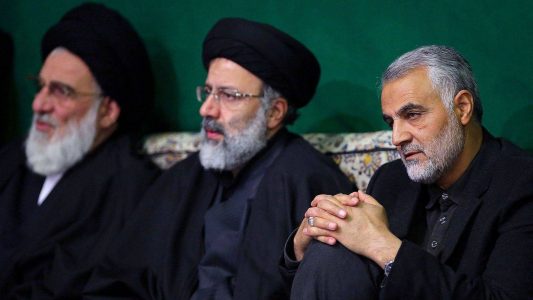
What will revenge look like for Iran in wake of general’s killing?
Iran will feel compelled to avenge the killing of its most powerful general by the United States in a move that could trigger further US retaliations, risking an escalation to all-out war.
The regime could hit back directly with missile attacks on US targets – highly unlikely as this would guarantee US strikes on their own soil – or via proxy forces in the region.
There are less conventional tools too in the Iranian arsenal, standing below the threshold of war.
One tactic could be increased attacks against international shipping in the Gulf – a vital transit point for global oil. Another could be cyber attacks, potentially even directly on the US.
Tehran could also commit further breaches of an embattled nuclear deal with global powers. The United States is no longer a party but Britain, France and other powers still see the pact as the only way to stop Iran from becoming a nuclear-armed state.
The various forms of Iranian counter-attack would doubtless have been made clear to President Donald Trump before he approved the order to target Major General Qassem Soleimani in a drone strike at Baghdad airport.
America’s commander-in-chief had warned Tehran it would pay a “very big price” after pro-Iranian militiamen stormed America’s embassy in the Iraqi capital on New Year’s Eve and in the wake of a rocket attack that killed a US contractor.
But the targeting of the head of Iran’s shadowy Quds Force would most likely have been at the more severe end of a list of possible responses available to him.
The US embassy in Baghdad has already urged all American citizens to leave Iraq immediately, while an Iran-backed Iraqi militia commander has ordered his men to be ready for an upcoming battle.
It is unlikely any response will be contained to within Iraq. Nor will it be a single measure. More likely we will see a sustained, increased campaign of hostility from the regime.
What happens next depends on how far Tehran is willing to allow the confrontation to go.
Will it be satisfied with hitting back at the United States in the wider Middle East region via its proxy forces – a move that might prevent a direct confrontation between the two sides?
Or will the regime choose to strike US interests directly?
It is highly unlikely that any attempt will be made to launch a conventional military attack on US soil, such as with a cruise missile – a reminder of the geographic advantage the US holds. But that does not rule out the possibility of cyber strikes.
And Iran does have the ability to inflict hard, military damage on US forces in its neighbourhood, including the Gulf, where thousands of US personnel as well as warships and aircraft are located.
This would be a highly dangerous move that would force the United States to hit back directly at Iran – a tit-for-tat that would very quickly risk descending into war.
The US will be ready for – and expecting – a rise in attacks on its bases in Iraq by pro-Iranian militias. There could be another attempt at storming the embassy in Baghdad.
Another element to factor in is the action of the Iraqi government.
Prime Minister Adel Abdul Mahdi said the US killing on General Soleimani would “light the fuse of war”. He condemned it as a “massive breach of sovereignty”.
At the very least it will ramp up pressure on the Iraqi government to withdraw permission for US forces to operate in the country. This is especially true as they are no longer fighting to regain territory held by Islamic State – the reason they were allowed to re-enter back in 2014.
Britain is urging de-escalation. It will be all too aware of the extremely volatile nature of this crisis and the potential of its forces again being drawn into a new Middle East conflict.
Source: Sky News





